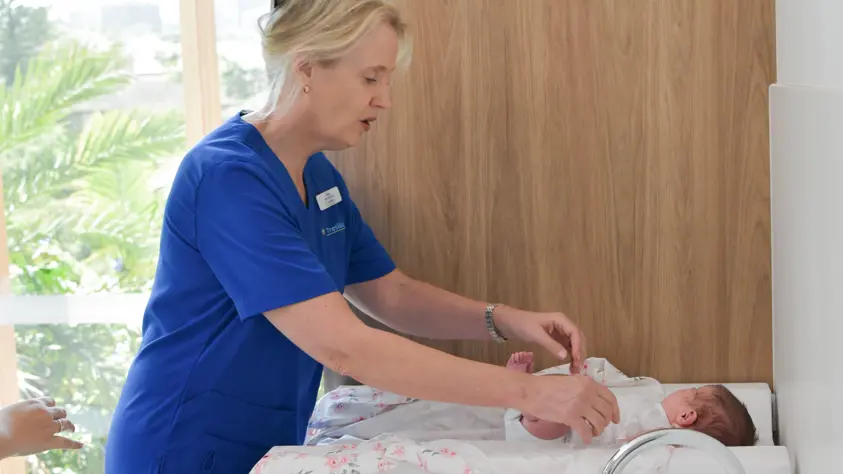How much sleep do newborns need?
Newborn sleep patterns vary however most babies at this age sleep 14 - 17 hours in a 24 hour period. Usually this is broken up into 6 to 8 periods of sleep, lasting from 2 to 4 hours each.
Newborns have short and sometimes frequent periods of wakefulness for a feed, short socialisation or resettle. The day-night pattern emerges by about 4 weeks old.
What are my newborn's tired signs
When babies are tired, they might yawn, frown, get fussy, or rub their eyes, among other signs. Addressing these signs quickly helps calm the baby and makes it easier for them to sleep.
An example of a Newborn to 6 week old sleep schedule
Night time sleep: Over this period, your baby will have 6 - 8 regularly occurring periods of sleep, lasting 2 - 4 hours each, around the clock. By 4 weeks, their day-night pattern emerges.
Daytime naps: 6 - 8 periods of sleep (2 - 4 hours each) around the clock.
Newborn to 6 week wake window: 1 to 2 hours.
Feeding: Every 2 -3 hours.
An example of a 6 to 12 week old sleep schedule
Night time sleep: 1 period of sustained sleep of 4 to 5 hours during which your newborn might self-settle. They will still wake briefly 1 - 3 times during this longer stretch. By 12 weeks, your newborn will have a day-night pattern.
Daytime naps: 3 to 4 daytime naps (1 - 3 hours each)
6 to 12 week wake window: 1 - 2.5 hours.
Feeding: Every 2 - 4 hours.









































